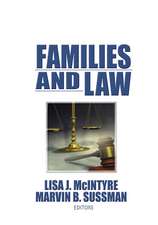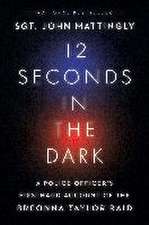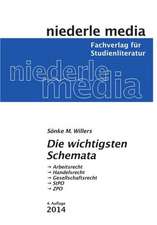The Law-Making Process
Autor Professor Michael Zanderen Limba Engleză Paperback – 24 iun 2020
Preț: 329.34 lei
Nou
Puncte Express: 494
Preț estimativ în valută:
63.03€ • 65.56$ • 52.03£
63.03€ • 65.56$ • 52.03£
Carte în stoc
Livrare din stoc 05 martie
Preluare comenzi: 021 569.72.76
Specificații
ISBN-13: 9781509934539
ISBN-10: 1509934537
Pagini: 560
Dimensiuni: 169 x 244 x 35 mm
Greutate: 0.88 kg
Ediția:8
Editura: Bloomsbury Publishing
Colecția Hart Publishing
Locul publicării:London, United Kingdom
ISBN-10: 1509934537
Pagini: 560
Dimensiuni: 169 x 244 x 35 mm
Greutate: 0.88 kg
Ediția:8
Editura: Bloomsbury Publishing
Colecția Hart Publishing
Locul publicării:London, United Kingdom
Caracteristici
New to this edition: coverage of the attempt to control the size of the House of Lords, on whether Parliament should have a role in the selection of senior judges and on the topical question whether decisions of the courts on constitutional questions are 'legal' or 'political'
Notă biografică
Michael Zander KC is Emeritus Professor at the London School of Economics and Political Science. For 25 years he was also Legal Correspondent at The Guardian. He is acknowledged to be one of the foremost authorities on the workings of the legal system.
Cuprins
Summary of Contents 1. Legislation: The Whitehall Stage 1.1. The Preparation of Legislation 1.2. Drafting Legislation 1.3. Criticism of the Quality of Drafting 1.4. What to do about the Quality of the Statute Book? 1.5. The 'Good Law' Initiative 1.6. Final Approval before Introduction in Parliament 2. Legislation: The Westminster Stage 2.1. The Legislative Process 2.2. Legislative Committees 2.3. The Role of the Bill Team 2.4. Interaction Between Interested Parties During the Legislative Process 2.5. The Time Taken by Parliamentary Debates 2.6. The Impact on Bills of the Parliamentary Process 2.7. The Composition and Size of the House of Lords 2.8. Publication of Bills in Draft Form 2.9. Carrying-Over Legislation from One Session to Another 2.10. Control of Business 2.11. Control of the Length of Debates 2.12. The Parliament Acts of 1911 and 1949 2.13. Legislation in Haste 2.14. When does a Statute Come into Force? 2.15. Statutes Online 2.16. The Reach of Legislation and Devolution 2.17. Delegated Legislation 2.18. Rejecting Delegated Legislation 2.19. Scrutiny of Delegated Legislation 2.20. Delegated Legislation: Anglo-American Comparison 2.21. Making Better Law 3. Statutory Interpretation3.1. Interpretation is a Necessary Aspect of Communication 3.2. The Three Basic So-Called 'Rules' of Statutory Interpretation 3.3. The Three Basic Rules Considered 3.4. Understanding the Context: Statutes and Judicial Decisions 3.5. Understanding the Context: Evidence Beyond Statutes and Judicial Decisions 3.6. Presumptions and Subordinate Principles of Interpretation as an Aid to Construction 3.7. Are the Rules, Principles, Presumptions and Other Guides to Interpretation Binding on the Courts? 3.8. Interpreting Bills of Rights 3.9. What (if any) is the Function of General Statutory Rules on Statutory Interpretation? 3.10. Do Statements of General Principle Assist? 3.11. What is the Court's Proper Function in Interpreting a Statute? 4. Binding Precedent: The Doctrine of Stare Decisis 4.1. The Hierarchy of Courts and the Doctrine of Binding Precedent 4.2. A Comparison with Some Other Countries 4.3. The European Court of Justice 4.4. Devolution Issues 5. How Precedent Works 5.1. Professional Techniques for Using Precedents 5.2. Preparation and Delivery of Judgments5.3. Are Precedents Law or Only Evidence of the Law? 5.4. The Values Promoted by the System of Precedent 5.5. Flexibility and Stability in the Common Law System 6. Law Reporting 6.1. The History of Law Reporting 6.2. Criticisms of the System 6.3. The Advent of Online Access to Law Reports 6.4. What Decisions are Reported? 6.5. Too Many Unreported Decisions 6.6. Restricting the Citation of Authorities 6.7. The Hierarchy of Reports 6.8. The Form of Law Reports 7. The Nature of the Judicial Role in Law-Making 7.1. The Personal Element in Judicial Law-Making 7.2. The Background of Judges 7.3. The Appointment of Judges 7.3.1. The Lord Chancellor Replaced by a Judicial Appointments7.4. Do Judges have Biases? 7.5. Should Judges be Activist? 7.6. Can Judges Undertake their Own Researches into the Law? 7.7. What the Law is and What it Ought to be 7.8. The Practical Effect of the Retrospective Impact of Common Law Decisions 7.9. Prospective Overruling as an Aid to Creative Law-Making 7.10. Legal Argument by Non-Parties 7.11. Interaction between the Judge and the Advocate 7.12. The Trend Toward Written Argument 7.13. Interaction between the Judges and their Judicial Assistants 7.14. The Interaction between the Judges 7.15. The Role of the Supreme Court 8. Foreign and Other Sources of Law 8.1. European Union Law 8.2. Scholarly Writings 8.3. Custom 8.4. Quasi-legislation, Codes of Practice, Circulars, Guidance etc 9. The Process of Law Reform 9.1. The History 9.2. The English and Scottish Law Commissions 9.3. The Law Commission - Modern Developments 9.4. Judicial Law-Making in the Light of the Existence of the Law Commission 9.5. The Law Commission and the Codification Project 9.6. The Law Commission and Consultation
Recenzii
REVIEW OF THE SEVENTH EDITIONLike all Professor Zander's written works, this new edition provides us with a readable, illuminating study of the issues... this is a substantial work, and appropriate to do justice both to the importance and the subtle refinements of the processes by which our laws are made.
REVIEWS OF THE FIRST EDITION The Law-Making Process is a book which has developed out of the author's Cases and Materials on the English Legal System. The result lies somewhere between a collection of cases and materials and a text-book, the author illustrating a lively text by well-chosen extracts from a wide variety of sources.
The materials are well chosen, well grouped, varied and usually of a sensible length. They raise a series of consistently fascinating questions about the contemporary evolving and imperfect system.
Michael Zander has got together a most interesting collection of cases and materials, extracts and excerpts from all kinds of sources, with a light lucid linking commentary . The student who absorbs this book will have a good grounding, he will be on the right road. The more mature lawyer will have a better understanding of his craft. The law-maker who addresses himself to the institutional problems raised in this book, and genuinely seeks to overcome them, will be worthy of his responsibilities.
This book shows that by using a full-range of source materials enlivened by critical comment it is possible to achieve a high level of knowledge about the mysteries of the law. The work is highly recommended.
It should be read by anyone whose elected or vocational office requires him to understand the law making process in this country.
Then there are the two groups of students whose needs inspired Professor Zander to compile this volume. Taking the non-law students first, they should find this book a boon and a blessing, if they are grappling with a specialised part of an unfamiliar subject. As for the law students, there is something familiar and something fresh for them, with plenty of indications for future reading. The Zander approach has given them a new way of looking at the law library shelves.
This is a most readable, stimulating book containing many extracts and excerpts which the ordinary law student would not find and might not search out, even if he were given the references. While no attempt has been made to deal with Scots law or Scottish conditions much of the book is generally relevant to study in Scotland and could be read with profit by Scottish students.
A veritable treasure chest of information about the legal system and how it works. It is also amazingly accessible.and deserves a place on every law student's shelf.
REVIEWS OF THE FIRST EDITION The Law-Making Process is a book which has developed out of the author's Cases and Materials on the English Legal System. The result lies somewhere between a collection of cases and materials and a text-book, the author illustrating a lively text by well-chosen extracts from a wide variety of sources.
The materials are well chosen, well grouped, varied and usually of a sensible length. They raise a series of consistently fascinating questions about the contemporary evolving and imperfect system.
Michael Zander has got together a most interesting collection of cases and materials, extracts and excerpts from all kinds of sources, with a light lucid linking commentary . The student who absorbs this book will have a good grounding, he will be on the right road. The more mature lawyer will have a better understanding of his craft. The law-maker who addresses himself to the institutional problems raised in this book, and genuinely seeks to overcome them, will be worthy of his responsibilities.
This book shows that by using a full-range of source materials enlivened by critical comment it is possible to achieve a high level of knowledge about the mysteries of the law. The work is highly recommended.
It should be read by anyone whose elected or vocational office requires him to understand the law making process in this country.
Then there are the two groups of students whose needs inspired Professor Zander to compile this volume. Taking the non-law students first, they should find this book a boon and a blessing, if they are grappling with a specialised part of an unfamiliar subject. As for the law students, there is something familiar and something fresh for them, with plenty of indications for future reading. The Zander approach has given them a new way of looking at the law library shelves.
This is a most readable, stimulating book containing many extracts and excerpts which the ordinary law student would not find and might not search out, even if he were given the references. While no attempt has been made to deal with Scots law or Scottish conditions much of the book is generally relevant to study in Scotland and could be read with profit by Scottish students.
A veritable treasure chest of information about the legal system and how it works. It is also amazingly accessible.and deserves a place on every law student's shelf.














